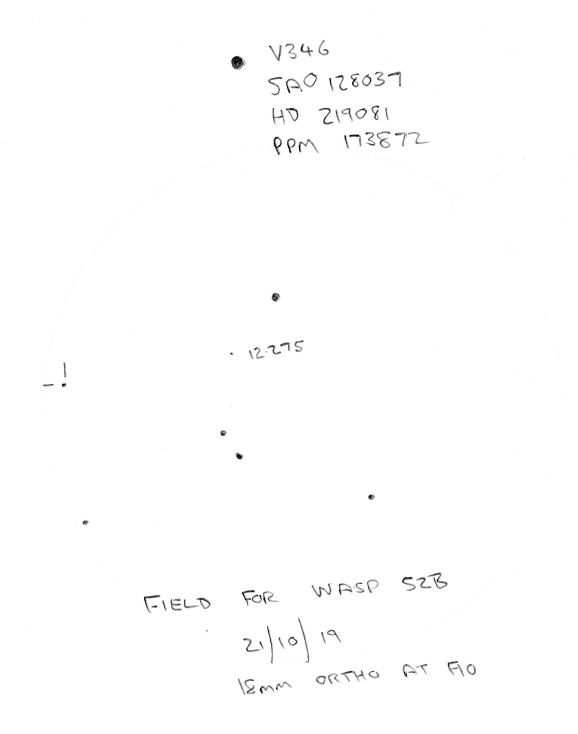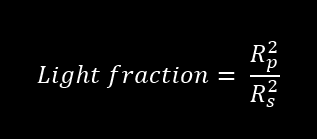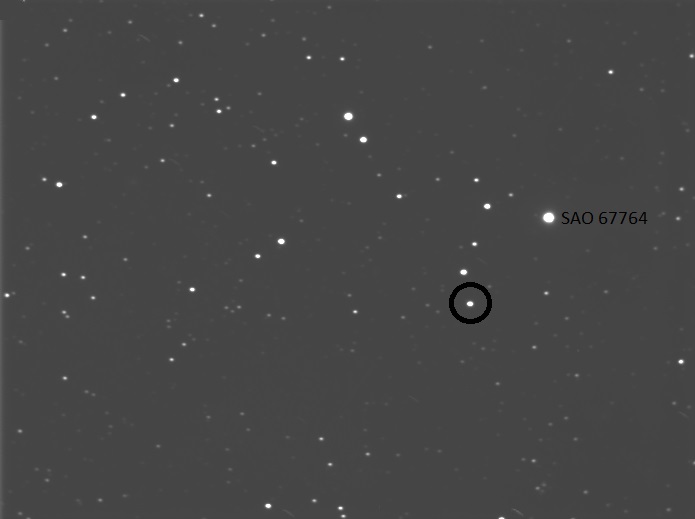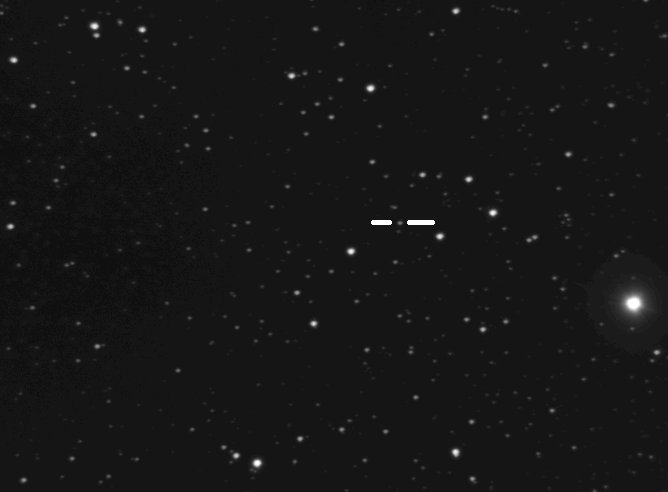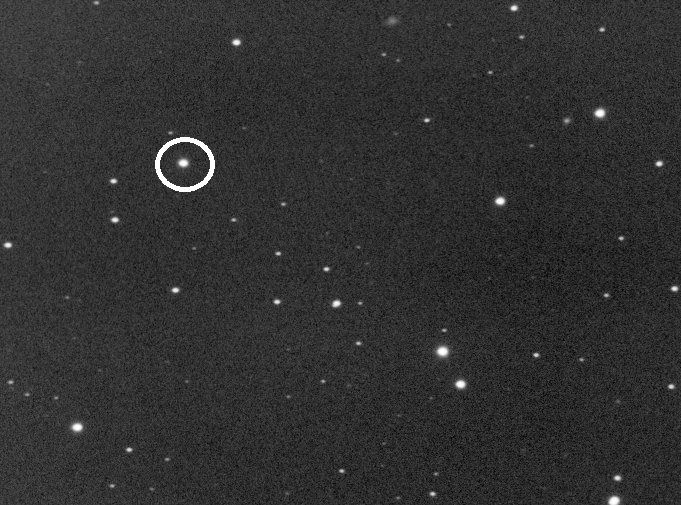Transit method
If the Earth happens to lie within a few degrees of the orbital plane of a planet orbiting round another star then the planet can pass in front of the stellar disc causing a small drop in light. This light drop is proportional to the area of the planet’s disc compared to the star or in short proportional to the ratio of the radius squared.
Where Rp is the radius of the planet and Rs is the radius of the star. So if the planet’s radius is 10% of the star’s there will be a 1% drop in light. A good place to find predictions for exoplanet transits is here.
Tres 1b
This planet orbits round an 11.79 magnitude star in Lyra. The light loss is 0.0208 and on 23/10/19 a transit started at 18:20 and ended at 20:50. Here is an index image showing the location of the star.
Here is the result. Each point is based on a single 15 second exposure using the Atik 314L+ and the LX200 at f6.3. The orange line is a moving average. Clearly my measurements are very noisy but the result is quite clear.
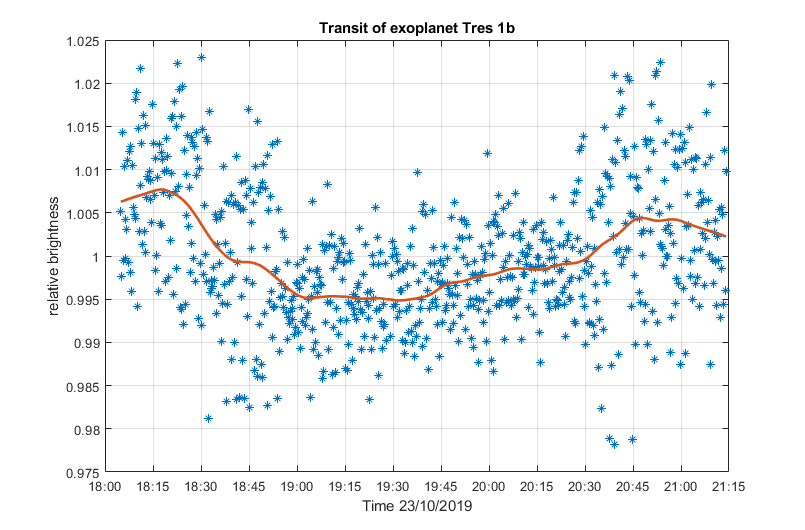
Kepler 17b
RA 19h53m35s, Dec +47d48m53s. V=14.14, brightness change=0.021, duration 136 minutes, period 1.486 days. Start at 19:23 end at 21:29. More noisy data! LX200 at f6.3, Atik 314L+, UV/IR cut, 15 seconds exposure, binned 2×2. Kepler 17b was discovered in 2011. It is a gas giant with mass 2.45x Jupiter orbiting at 2.4 million miles from a G type star.
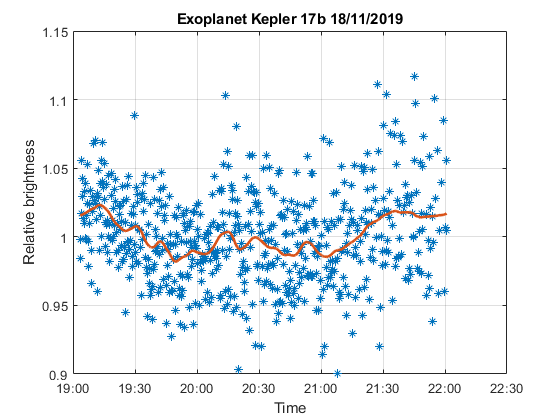
Wasp 52b
Wasp 52b field LX200 f6.3
A sketch showing that my limiting visual magnitude is about 12.5. Also a suitable goto star to find the field.
